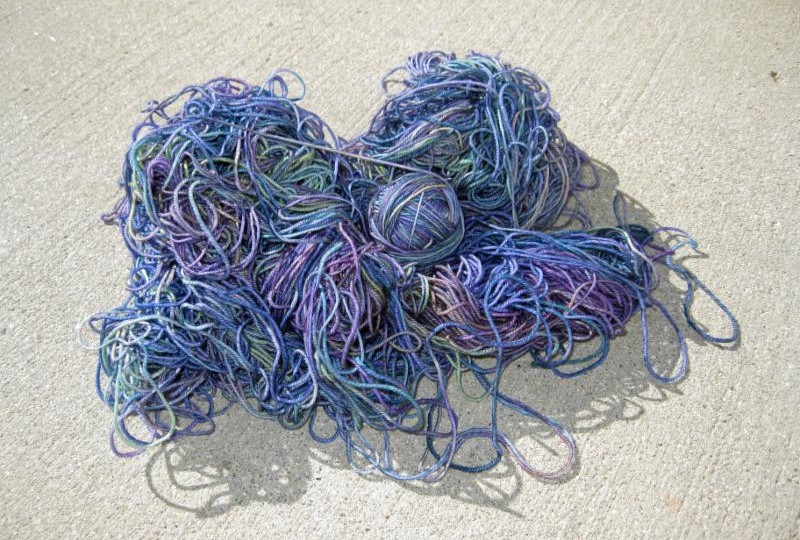Unraveling a Mess
- Mar 20, 2015
- By personifyadmin
- In Newsletters
- 0 Comments
My mother in law loves to knit. I watch her sometimes work for hours easily twisting one thread of yarn through the hook and into the convergence of multiple other threads, seamlessly creating a blanket or a scarf or a hat. It seems simple, really, one motion followed by another in rhythm. One day, my 4 year old daughter, Cate, got a hold of her yarn and made a mess of it as all good kids will do. I recovered the yarn and began the processing of unraveling it. I was hoping this too would be simple, that the threads would yield and untangle easily as I pulled them from their clumped mess. Unfortunately, that was not the case. It seemed one string of thread was tied to another and then to another and the task became tireless and futile.
Unraveling is difficult. In my work with leaders in organizations, it’s often at the point when everything feels like a mess, clumped together in one large ball of yarn and impossible to unravel that I’m asked to come in and assist. The reality is, these teams and organizations are in fact usually a mess. They look something like this;
- The leader can’t get the team to align on objectives, they agree but for some reason never follow through.
- The Leader can’t get her boss to support her so she goes around him periodically.
- The leader’s boss doesn’t support the leader and often interferes directly with the team creating confusion. He feels the only way to get results is to step in directly because his leader isn’t effective and at times he is right.
- The team wants clarity and without it, they create their own path, sometimes in alignment with the leader and the rest of the team and sometimes not.
- The customer is frustrated with the breakdown in the organization so they insert themselves more aggressively into the mix to get there needs met.
- The leader’s boss feels helpless. He sees the mess but doesn’t know where to start to unravel it.
Whew! Exhausting isn’t’ it? Any of this sound familiar? So, how do you unravel it?
Take a look at different perspectives
- In order to unravel, you have to see the situation from all angels. This could mean informally interviewing people from all parts and of the system. What do they see? What are they experiencing? This will start to create a picture of where the yarn overlaps and where it tangles. The act of looking at different perspectives gives you the information you need to problem solve at the root cause level.
Identify the doom loop
- What is doom loop? A doom loop is when two or more people’s behavior creates the exact situation in which they are trying to undo or untangle.
- How do you know what you are looking for? You look for behaviors that escalate based on your behaviors.
Let’s go back to the example I provided early of “a mess” and see if we can unravel the doom loop.
Behavior #1 Sam doesn’t trust that Stacy will get work done through her team
Behavior #2 Sam interferes directly with Stacy’s team
Behavior #3 Stacy doesn’t share information with Sam and works around Sam.
Behavior #4 Sam interferes even more with Stacey’s team
We can see here that Sam’s behavior is undermining his goal to get Stacy to get work done through her team and share openly and transparently with him.
Identifying the doom loop is only one part of the solution. I’ve seen lots of teams make it this far and then fail because the difficulty is not just in seeing the mess but in the willingness to do your part to clean up the mess for good.
Here are some suggestions:
Commitment
- Ask each person in the doom loop to identify what behavior they are committed to changing and ask them how they want to be held accountable to it.
Grace
- Each person involved in the doom loop will fail at one time or another, i.e. fall back into a patterned behavior. When they do it becomes an opportunity for the other person to hold strong and react differently. However, it’s likely they will fail too and it will create frustration and it will feel futile. It’s during this time that the team really needs to trust that the new behaviors they committed to will work and they can in fact break the cycle. There needs to be some tolerance for failure and a willingness to keep trying.
I have to say, it’s much easier to throw out the ball of yarn and start over! Who wouldn’t be tempted to do that! Most of you reading this are probably tired just trying to follow the doom loop let alone participating in cleaning up the mess. So, YES, this stuff is really hard. But here is the secret I’ve learned along the way… the most important person in cleaning up a mess in a relationship, team or organizational challenge is you. Even if you inherited your doom loop like I inherited my daughter’s mess. We just need to roll up our selves, take a few deep breathes and start unraveling.






Recent Comments